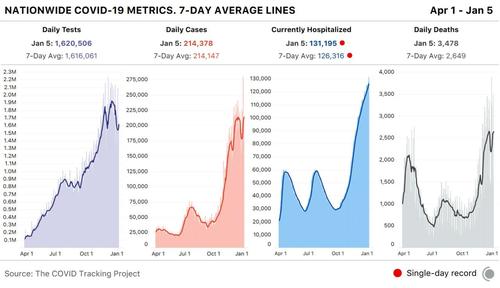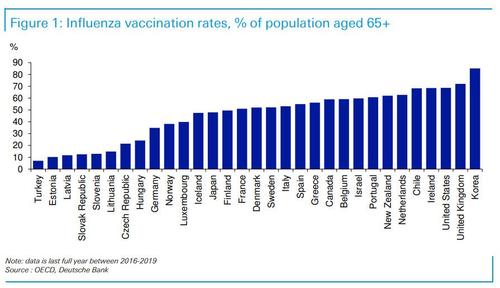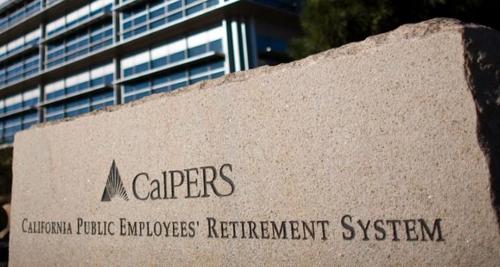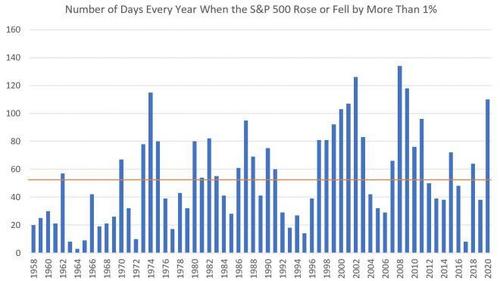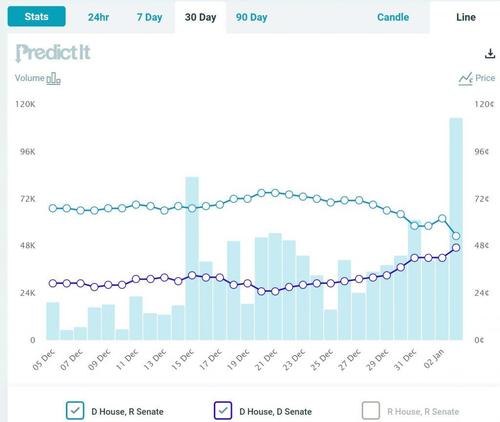Gina Criscione is being prosecuted for “telecommunications harassment” and “menacing by stalking,” under Ohio’s extraordinarily broad laws. Her crime? Posting sharp criticism of a retirement community at which her mother died, and in particular a manager at the community; according to the harassment complaint, she “did knowingly post several text and video/audio messages to a social media website with the purpose to harass and annoy” the manager. She also picketed outside the community (and apparently once drove on the grounds of the retirement community, I assume in the parking lot).
Our invaluable local counsel Jeffrey M. Nye and I (with the help of UCLA School of Law student Skyler Ross) have filed an amicus brief, on behalf of Profs. Jonathan Entin, Andrew Geronimo, and Ray Ku (Case Western), Profs. David Forte, Stephen Lazarus, and Kevin O’Neill (Cleveland-Marshall), and me, supporting a motion to dismiss. (Thanks, as always, to Scott & Cyan Banister for their support of the UCLA First Amendment Clinic.)
We think the relevant part of the statutes are unconstitutionally overbroad, and also unconstitutional as applied. Whether Criscione could have been prosecuted for simple trespassing, setting aside her constitutionally protected commentary and picketing, is a separate matter: The menacing-by-stalking charge that mentions the trespassing also relies on Criscione’s “knowingly engag[ing] in a pattern of conduct with purpose to cause mental distress by posting multiple negative messages to a website,” and is thus not limited to the alleged trespassing.
Summary of Argument
[1.] The telecommunications harassment statute and menacing by stalking statute are unconstitutionally overbroad:
- The telecommunications harassment statute bars knowingly posting anything “on an internet … web page for the purpose of abusing, threatening, or harassing another person,” R.C. 2917.21(B)(2)—criminalizing any online statement that is seen as being ill-intentioned.
- The menacing by stalking statute bars people from making multiple posts online if they know that their pattern of conduct would cause another “mental distress” (or, possibly, would cause another to believe that future conduct will cause mental distress), R.C. 2903.211(A)(1)-(2).
These statutes criminalize a substantial amount of protected speech, including speech on matters of public concern. They could, for instance, expose a person to criminal liability for repeatedly ridiculing a local community leader based on a political position the leader has taken—though such a prosecution would violate the First Amendment, see Rynearson v. Ferguson, 355 F.Supp.3d 964, 972 (W.D. Wash. 2019). Moreover, even speech on matters of private concern is protected by the First Amendment. See Bey v. Rasawehr, __ N.E.3d __, 2020-Ohio-3301, ¶ 59.
Unlike traditional telephone harassment statutes, these statutes are not limited to unwanted speech said to an unwilling listener—speech that can in some situations be properly restricted, regardless of its subject matter. Rather, they extend even to critical public expression of opinions or true statements of fact about a person, which is generally constitutionally protected.
[2.] The statutes are not saved by their mens rea requirements. Even if speakers are “motivated by hatred or ill-will,” their speech on matters of public concern is still protected by the First Amendment. Bey, 2020-Ohio-3301, ¶ 59. And Bey makes clear that the same is true of speech on matters of private concern. Id. There is no First Amendment exception for discomforting or upsetting speech made to the public, even if the speech is made with bad intent or with knowledge that some will find it disturbing.
[3.] The telecommunications harassment and menacing by stalking statutes are thus facially unconstitutional—but they are also unconstitutional as applied as well. Ms. Criscione spoke publicly on her personal social media page and while picketing on a public sidewalk. She criticized a healthcare organization and its employees for what she perceived as poor job performance. Statements regarding the “quality of … medical care” involve “a public issue of community concern.” Mucci v. Dayton Newspapers, Inc., 71 Ohio Misc. 2d 71, 75, 654 N.E.2d 1068 (Ct. Com. Pl. 1995). Yet Ms. Criscione is being prosecuted for her statements anyway.
[4.] Since these statutes criminalize speech based on its content, they are unconstitutional unless they pass strict scrutiny. This they cannot do. Even if there is a compelling governmental interest in protecting people from abuse, harassment, and mental distress, barring a broad range of public criticism cannot be narrowly tailored to serve that interest. See Snyder v. Phelps, 562 U.S. 443, 458-59, 131 S.Ct. 1207, 179 L.Ed.2d 172 (2011) (holding that even outrageous speech that causes emotional distress is still constitutionally protected).
East Park and its employees might prevail in a defamation lawsuit against Ms. Criscione, if they can prove that her allegations are false. But Ohio cannot constitutionally prosecute Ms. Criscione for such criticism under the state’s telecommunications harassment and menacing by stalking statutes, which require no showing of libelous falsehood. These charges should therefore be dismissed.
Argument
[A.] The Telecommunications Harassment and Menacing by Stalking Statutes Are Unconstitutionally Overbroad
In a facial overbreadth challenge, a plaintiff “must show that [a statute’s] potential application reaches a significant amount of protected activity.” City of Akron v. Rowland, 67 Ohio St. 3d 374, 387, 618 N.E.2d 138 (1993). Criminal statutes are unconstitutionally overbroad if they are “susceptible of regular application to protected expression” “even if they also have legitimate application.” Id. (internal citations omitted). The telecommunications harassment and menacing by stalking statutes are facially overbroad, because they criminalize much political and personal commentary of the sort that is routine when people discuss matters that outrage or greatly concern them.
[1.] The telecommunications harassment and menacing by stalking statutes are alarmingly broad speech restrictions
The telecommunications harassment statute, R.C. 2917.21(B)(2), states:
No person shall knowingly post a text or audio statement or an image on an internet web site or web page for the purpose of abusing, threatening, or harassing another person.
It excludes persons who are “employed or contracted by a newspaper, magazine, press association, news agency, news wire service, cable channel or cable operator, or radio or television station” and speaking as part of their jobs, R.C. 2917.21(F); but that exception covers only a tiny fraction of all Ohioans.
Ohio courts have understood “abuse” to be a synonym for “mistreat,” and “harass” to mean “to annoy or torment repeatedly and persistently.” See, e.g., State v. Dennis, 3d Dist. Allen No. 1-97-42, 1997 WL 691448, *2 (Oct. 30, 1997) (reading “purpose of being abusive, threatening, annoying, or harassing” as meaning a “purpose to mistreat another person, to express a threat to another person, to irritate another, or to persistently torment”); State v. Dart, 2d Dist. Montgomery No. 23955, 2010-Ohio-5637, at 9 (defining “harass” as “to annoy or torment repeatedly and persistently”).
The menacing by stalking statute, R.C. 2903.211(A)(2), reads:
No person, through the use of any form of written communication or any electronic method of remotely transferring information … shall post a message or use any intentionally written or verbal graphic gesture with purpose to … violate division (A)(1) of this section.
R.C. 2903.211(A)(1), in turn, provides:
No person by engaging in a pattern of conduct shall knowingly cause another person to believe that the offender will cause physical harm to the other person … or cause mental distress to the other person ….
The statute defines “mental distress” as “[a]ny mental illness or condition that involves some temporary substantial incapacity,” R.C. 2903.211(D)(2)(a), or that “would normally require psychiatric treatment, psychological treatment, or other mental health services,” R.C. 2903.211(D)(2)(b). The statute (in R.C. 2903.211(A)(2)) also restricts speech about people’s employers, since people’s mental distress may flow from,
words or conduct of the offender that are directed at or identify a corporation, association, or other organization that employs the other person or to which the other person belongs.
Under both of these statutes, public posts critical of government officials or other important figures could be criminally punished if they are seen as being made with the requisite intents. For example, the statutes encompass harsh ridicule or parody of public figures, which are clearly protected forms of expression. See Hustler Magazine, Inc. v. Falwell, 485 U.S. 46, 55-56, 108 S.Ct. 876, 99 L.Ed.2d 41 (1988) (holding that a public figure cannot sue for intentional infliction of emotional distress resulting from a parody because the parody is protected speech). A blogger who repeatedly ridicules a local community leader for a political position the leader took, for instance, could face prosecution under these statutes—even though “speech uttered or typed with the intent to embarrass a person … is protected speech.” Rynearson, 355 F.Supp.3d at 972 (striking down the Washington criminal harassment statute).
The statutes also cover speech about private figures on matters of private concern. Imagine a woman breaks up with an unfaithful boyfriend, and repeatedly posts on her Facebook page her real feelings about him. A prosecutor could conclude that the woman posted her Facebook message intending to “abuse” her ex-boyfriend or cause him “mental distress.” Yet such speech about the details of one’s daily life is constitutionally protected. Even “[w]holly neutral futilities” that lack political, artistic, or similar value are “still sheltered from government regulation.” United States v. Stevens, 559 U.S. 460, 479-480, 130 S.Ct. 1577, 176 L.Ed.2d 435 (2010) (internal citation omitted).
[The court’s] role … is not to pass judgment on the … First Amendment value of [a speaker’s] allegations. To the extent [the speaker’s] statements involve matters of both private and public concern, we cannot discount the First Amendment protection afforded to that expression. We most assuredly have no license to recognize some new category of unprotected speech [referring to private-concern speech] based on its supposed value.
Bey v. Rasawehr, __ N.E.3d __, 2020-Ohio-3301, ¶ 59.
These statutes are also not limited to speech directed to an unwilling listener. Traditionally, criminal harassment laws covered speech directed to a particular and unwilling recipient—for instance, telephone calls, letters sent to a particular home, or e-mails sent to a particular person. For that reason, the Supreme Court upheld a federal law forbidding people from sending certain material to others once the recipients have told senders to stop: “no one has a right to press even ‘good’ ideas on an unwilling recipient.” Rowan v. U.S. Post Office Dep’t, 397 U.S. 728, 738, 90 S.Ct. 1484, 25 L.Ed.2d 736 (1970); cf. Frisby v. Schultz, 487 U.S. 474, 486, 108 S.Ct. 2495, 101 L.Ed.2d 420 (1988) (upholding a ban on targeted residential picketing, because such picketing “is narrowly directed at the household, not the public,” and is thus “fundamentally different from more generally directed means of communication that may not be completely banned”). Similarly, Ohio has banned unwanted e-mails or telephone calls after the recipient has told the speaker to stop. R.C. 2913.01(X), 2917.21(A)(5).
But while “attempting to stop the flow of information into [one’s] own household” (speech to a person) is constitutional, trying to block criticism of a person said “to the public” (speech about a person)—as the statutes here do—violates the First Amendment. Organization for a Better Austin v. Keefe, 402 U.S. 415, 420, 91 S.Ct. 1575, 29 L.Ed.2d 1 (1971) (distinguishing Rowan on this basis); see also David v. Textor, 189 So.3d 871, 876 (Fla. Ct. App. 2016) (setting aside an injunction against speech on First Amendment grounds because, “The injunction prevents not only communications to Textor, but also communications about Textor.”).
The telecommunications harassment and menacing by stalking statutes are thus “criminal prohibition[s] of alarming breadth,” Stevens, 559 U.S. at 474. They potentially punish a vast range of harsh rhetoric so long as a prosecutor can persuade the factfinder that the speaker had a supposedly culpable mental state.
[2.] The telecommunications harassment statute is not saved by its requirement of bad purpose
The telecommunications harassment statute prohibits making a post on the Internet “for the purpose of abusing, threatening, or harassing another person.” R.C. 2917.21(B)(2). “The critical inquiry of telecommunications harassment is … whether the purpose of the [speaker] was to abuse, threaten or harass [another].” State v. Kronenberg, 8th Dist. Cuyahoga No. 101403, 2015-Ohio-1020, ¶ 15.
Yet a “speaker’s motivation” is generally “entirely irrelevant to the question of constitutional protection.” Fed. Election Comm’n v. Wis. Right to Life, Inc., 551 U.S. 449, 468, 127 S.Ct. 2652, 168 L.Ed.2d 329 (2007) (Roberts, C.J., joined by Alito, J.) (citation omitted); id. at 495 (Scalia, J., concurring in part and concurring in the judgment) (likewise rejecting a test based on speaker motivation).
Thus, in Garrison v. Louisiana, 379 U.S. 64, 78, 85 S.Ct. 209, 13 L.Ed.2d 125 (1964), the U.S. Supreme Court rejected the view that even truthful reputation-injuring speech could be punished because of the speaker’s allegedly bad motives, such as a “wanton desire to injure.” “If upon a lawful occasion for making a publication, [a speaker] has published the truth, and no more, there is no sound principle which can make him liable, even if he was actuated by express malice.” Id. at 73 (internal quotation marks and citation omitted). Likewise, in Hustler Magazine, the Court overturned an intentional infliction of emotional distress verdict, concluding that a bad motive does not strip speech of constitutional protection. 485 U.S. at 53. And in Snyder v. Phelps, 562 U.S. 443, 458, 131 S.Ct. 1207, 179 L.Ed.2d 172 (2011), the Court applied this principle to speech about private figures as well as public figures.
The Ohio Supreme Court has also rejected a motives-based test for speech protection. Even if speakers are “motivated by hatred or ill-will,” their speech on matters of public concern is still protected. Bey, Slip Op. No. 2020-Ohio-3301, ¶ 58. And, as discussed above, Bey makes clear that the same is true for speech without regard to its perceived value or public significance. Id. ¶ 59.
“Bad intent” requirements have not saved statutes similar to Ohio’s. For instance, a federal district court struck down a Washington law that prohibited “[a]nonymously or repeatedly” making electronic communications “with intent to harass, intimidate, torment, or embarrass any other person.” Rynearson, 355 F.Supp.3d at 969, 972. Similarly, the New York Court of Appeals struck down a cyberbullying statute that prohibited “electronic communications that are meant to ‘harass, annoy … taunt … [or] humiliate’ any person or entity.” People v. Marquan M., 19 N.E.3d 480, 486 (N.Y. 2014). Though the statutes in those cases only applied to speech made with a hostile intent, they were still facially unconstitutional.
The U.S. Supreme Court has given two reasons for holding that a speaker’s purpose does not generally strip speech of First Amendment protection. First, speech remains valuable even if its motives may be unsavory. “[E]ven if [a speaker] did speak out of hatred, utterances honestly believed contribute to the free interchange of ideas and the ascertainment of truth.” Garrison, 379 U.S. at 73.
Second, restricting speech based on its bad motive risks chilling even well-motivated speech. “Debate on public issues will not be uninhibited if the speaker must run the risk that it will be proved in court that he spoke out of hatred … .” Id. “No reasonable speaker would choose to [speak] if its only defense to a criminal prosecution would be that its motives were pure. An intent-based standard blankets with uncertainty whatever may be said, and offers no security for free discussion.” Wis. Right to Life, 551 U.S. at 468 (Roberts, C.J., joined by Alito, J.) (internal quotation marks omitted). “First Amendment freedoms need breathing space to survive,” and “[a]n intent test provides none.” Id. at 468-69 (citations omitted). Any effort to distinguish restricted speech from unrestricted speech “based on intent of the speaker … would offer no security for free discussion, and would compel the speaker to hedge and trim.” Id. at 495 (Scalia, J., concurring in part and concurring in the judgment, joined by Kennedy and Thomas, JJ.) (cleaned up).
Thus, in cases like this one, where a consumer criticized the performance of a company and its employee, a bad intent test risks chilling speech. Consumers often speak about a business after having bad experiences. When they do so, their motive often includes the legitimate desire to alert other consumers to the business’s poor performance.
Even if that motive is mixed with some form of intent to get back at the business, consumers should be free to speak without inquisition into their specific motives—or else they would be more likely to “hedge and trim,” or avoid criticizing the business altogether. The statutes therefore “offer[] no security for free discussion” and provide little “breathing space” for online speech that is critical of others.
[3.] The menacing-by-stalking statute is not saved by its requirement of knowledge
R.C. 2903.211(A)(1) provides that, “No person by engaging in a pattern of conduct shall knowingly cause another person to believe that the offender will cause physical harm to the other person … or cause mental distress to the other person” (emphasis added). This clearly requires a showing only of “knowledge,” not “purpose”—but “knowledge of what”? “A conflict exists among the appellate districts regarding whether R.C. 2903.211(A)(1) requires that the victim actually experienced mental distress or whether the victim’s belief that the stalker will cause him or her mental distress is sufficient.” Fondessy v. Simon, 142 Ohio St.3d 147, 2014-Ohio-4638, 28 N.E.3d 1202, ¶¶ 16-18 (Kennedy, J., dissenting, joined by French & O’Neill, JJ.). The first reading of the statute would prohibit “knowingly … caus[ing] mental distress.” The second would prohibit “knowingly caus[ing] another person to believe that the offender will … cause mental distress.” Id. ¶¶ 19-20 (Kennedy, J., dissenting, joined by French & O’Neill, JJ.).
But under either interpretation, the “mental distress” part of the statute would cover a substantial amount of constitutionally protected speech. Much constitutionally protected speech knowingly causes mental distress to its subject, or causes the subject to believe that more such distressing speech is coming:
- Accurately publicly accusing someone of committing a crime would qualify, if said more than once (so that the statements are a “course of conduct”).
- Accurately publicly accusing someone of sexual harassment would as well.
- Accurately informing friends, for instance on a Facebook page, that one’s spouse has been unfaithful may well knowingly cause mental distress to the spouse.
- Accurately informing fellow community members that someone is refusing to comply with a popular boycott, or with a strike, and may thus be seen by some as a traitor to one’s community. See NAACP v. Claiborne Hardware Co., 458 U.S. 886, 904, 910, 102 S.Ct. 3409, 73 L.Ed.2d 1215 (1982) (holding that such speech about black citizens who declined to comply with an NAACP-sponsored boycott of white-owned businesses is constitutionally protected, even though the speech may have led to some violent attacks on such citizens).
- The same is true of harsh public insults, including of public figures, for instance if the material in Hustler Magazine were published online. (It had indeed been published more than once, 485 U.S., at 49 n.1, so that would qualify as a “course of conduct.”)
- The mental distress would be magnified if the accusations come in online newspaper columns or in other publications with a large circulation. Unlike the telecommunications harassment statute, the menacing by stalking statute has no exception for professional journalists.
People would naturally be extremely upset if their past misconduct has been publicly revealed; they might well become depressed, which is a “mental … condition that would normally require … mental health services.” R.C. 2903.211(D)(2)(b). In Hustler Magazine, Jerry Falwell testified that he had indeed been extremely “hurt” by the public scurrilous attack on his character. Falwell v. Flynt, 797 F.2d 1270, 1276 (4th Cir. 1986), rev’d, 485 U.S. 46, 108 S.Ct. 876, 99 L.Ed.2d 41 (1988). Yet all the speech listed above would be constitutionally protected, for the reasons given in preceding sections.
Likewise, even ordinary constitutionally protected consumer criticism risks violating the menacing by stalking statute, if the statute is interpreted to cover Ms. Criscione’s speech. A person who makes multiple social media posts harshly critical of goods or services may well be “aware that the person’s conduct will probably cause” business owners to suffer mental distress, or to believe that the speaker will cause them mental distress by future posts.
[4.] Since the statutes restrict protected speech based on its content, they must be judged under strict scrutiny, which they cannot pass
The statutes therefore restrict a substantial amount of protected speech. They do so based on the content of the speech, and are thus unconstitutionally overbroad unless they pass “strict scrutiny.”
The government generally “has no power to restrict expression because of its message, its ideas, its subject matter, or its content.” Reed v. Town of Gilbert, 576 U.S. 155, 163, 135 S.Ct. 2218, 192 L.Ed.2d 236 (2015) (citation omitted). A restriction is content-based when “enforcement authorities” must “examine the content of the message that is conveyed to determine” if a criminal statute bars the message. McCullen v. Coakley, 573 U.S. 464, 479, 134 S.Ct. 2518, 189 L.Ed.2d 502 (2014) (internal citation marks omitted). “Some facial distinctions based on a message are obvious, defining regulated speech by particular subject matter, and others are more subtle, defining regulated speech by its function or purpose. Both are distinctions drawn based on the message a speaker conveys, and, therefore, are subject to strict scrutiny.” Reed, 576 U.S. at 163-64 (emphasis added).
The telecommunications harassment statute criminalizes speech that is intended to “abuse” or “harass.” “[E]nforcement authorities” cannot apply these statutes without examining the “function or purpose” of the speech, so the statutes are content-based. See People v. Releford, 104 N.E.3d 341, 350-51 (Ill. 2017) (holding that a statute criminalizing speech that could reasonably cause emotional distress is a content-based speech restriction). Likewise, the menacing by stalking statute criminalizes speech that the speaker knows will cause others “mental distress” (or perhaps speech that will cause others to believe that they will experience “mental distress”)—and the speech, as in this very case, may be potentially distressing precisely “based on the message [the] speaker conveys.” “[T]he emotive impact of speech on its audience is not a ‘secondary effect’ unrelated to the content of the expression itself.” Texas v. Johnson, 491 U.S. 397, 412, 109 S.Ct. 2533, 105 L.Ed.2d 342 (1989) (internal citation omitted). Restrictions that target speech based on such “emotive impact” are content-based. Id.
The telecommunications harassment and menacing by stalking statutes are thus subject to strict scrutiny. They are “presumptively unconstitutional” unless they are “narrowly tailored to serve compelling state interests.” Reed, 576 U.S. at 163. Only in a “rare case” would such a restriction “survive[] strict scrutiny.” Bey v. Rasawehr, __ N.E.3d __, 2020-Ohio-3301, ¶ 52 (quoting Flood v. Wilk, 125 N.E.3d 1114, 1116-17, 430 Ill.Dec. 96 (2019)); Susan B. Anthony List v. Driehaus, 814 F.3d 466, 474 (6th Cir. 2016). Yet there is no compelling state interest in forbidding almost all online speech (as opposed to, say, just threatening speech) that is seen as having a hostile motive or that is seen as highly distressing.
Moreover, these statutes are far from narrowly tailored, because they restrict a broad range of speech that falls far beyond any recognized First Amendment exception. They bar speech about people or their employers so long as the prosecutor and the jury conclude the speaker had a hostile intention or knew the speech would cause “mental distress.” Indeed, the telecommunications harassment statute is not even limited to situations where the subject of the speech is aware of the ill-intentioned statement. See State v. Bishop, 787 S.E.2d 814, 820, 368 N.C. 869 (N.C. 2016) (reasoning that an anti-cyberbullying statute did not satisfy strict scrutiny in part because the statute did not require that the victim suffer an injury or even know about the speech).
[B.] The Telecommunications Harassment and Menacing by Stalking Statutes are Unconstitutional as Applied
The telecommunications harassment and menacing by stalking statutes are not merely facially unconstitutional; they are unconstitutional as applied as well. Ms. Criscione’s public speech about how East Park Retirement Community supposedly treated her mother is fully protected by the First Amendment (except to the extent that someone can prove it to be false and defamatory in a libel lawsuit).
Ms. Criscione was criticizing the job performance of a health care organization and its employees. Statements about the “quality of … medical care” involve “a public issue of community concern.” Mucci v. Dayton Newspapers, Inc., 71 Ohio Misc. 2d 71, 75, 654 N.E.2d 1068 (Ct. Com. Pl. 1995); see also Lippincott v. Whisenhunt, 462 S.W.3d 507, 510 (Tex. 2015) (“the provision of medical services by a health care professional constitutes a matter of public concern”); St. Margaret Mercy Healthcare Ctrs., Inc. v. Ho, 663 N.E.2d 1220, 1224 (Ind. App. 1996) (“the fitness of a particular professional healthcare provider is a matter of legitimate public concern”).
More broadly, statements by consumers about the quality of goods or services are also on matters of public concern. See, e.g., Wilbanks v. Wolk, 121 Cal.App.4th 883, 900 (2004) (holding that warnings to avoid a financial professional’s services are “directly connected to an issue of public concern”); Abrams v. Sanson, 458 P.3d 1062, 1066, 136 Nev. 83 (2020) (holding that a statement about a lawyer’s courtroom conduct was on a matter of public concern because “it serves as a warning to both potential and current clients looking to hire or retain the lawyer”); Obsidian Finance Grp., LLC v. Cox, 740 F.3d 1284, 1292 (9th Cir. 2014) (giving “a business owner’s refusal to give a refund to a customer who bought an allegedly defective product” as an example of speech on “a matter of public concern”); id. (likewise as to “claim that a mobile home park operator charged excessive rent”).
If Ms. Criscione were being prosecuted for speaking directly to a particular person, after that person had told her to stop, this would be a different case; likewise, if she were being prosecuted for true threats of illegal conduct. But this case involves fully protected speech: consumer complaints conveyed to the public. Even if Ms. Criscione knew that her posts would cause East Park or its employees “mental distress,” or if she knew that her posts would cause East Park or item employees to believe that she would cause them “mental distress,” or if she was in part actuated by a desire to mistreat or to persistently annoy, her public speech would remain constitutionally protected.
from Latest – Reason.com https://ift.tt/2JPqNQF
via IFTTT


